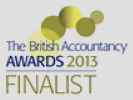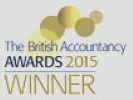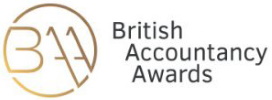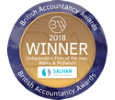For some business owners, company accounts are a complex and confusing chore. When you consider the number crunching and jargon involved, it’s easy to understand why. However, once you get to grips with your company accounts and actually understand the figures involved, you benefit from a wealth of useful information. Understanding the overall financial health of your company is vital and can mean the difference between thriving and struggling.
Balance Sheet
The balance sheet can provide key information on the value of your company; it’s health and how this is reflected in shares. It does this by looking at two different sets of figures- assets and liabilities. Assets represent anything which is owned by the company and these are broken down in to fixed and current categories.
- Fixed Assets are long-term, e.g. property, research investment, land, trademarks etc.
- Current Assets are short-term, e.g. money in the bank, petty cash, stocks etc.
Similarly, liabilities are categorised as long-term and current.
- Long-term Liabilities represent any money which is not due to be repaid within the next year.
- Current Liabilities, therefore, represent any payments which are due to be repaid in the next year.
Using these figures, you can get a pretty good picture of how well the business is doing. For example, the liquidity ratio gives an understanding of the short-term health of the company.
Liquidity Ratio = Current Assets / Current Liabilities
You’re looking for this figure to be above one; if it drops below one, then the company could be in trouble in the near future.
You can look into this further by calculating the Acid Test Ratio, which is Current Assets minus the value of stock, divided by current liabilities. This gives you a rough idea of how a business will cope in the extreme short-term as it removes the value of stock, which can be particularly difficult to sell in an emergency situation.
Another useful calculation is the Net Asset Value, which provides the overall value of the business.
- Net Asset Value = Fixed Assets + Current Assets / Total Liabilities
Typically, the NAV is represented as a function of the company’s shares, but this calculation is fairly simple, it’s the NAV divided by the number of shares. Business owners should be looking for a share price higher than the NAV per share figure, as this means the market expects future profits. However, if the NAV per share is higher than the share price, this is a very worrying sign.
Profit and Loss Statement
The profit and loss statement features a lot of the same information as the balance sheet but differs in the time period being assessed. The balance sheet is a snapshot of the health of the business at that specific moment; however, the profit and loss statement looks at longer-term trends, usually yearly, half-yearly or quarterly.
One of the most useful figures from this statement is gross profit, which is actually a fairly simple calculation.
- Gross Profit = Turnover – Cost of Sales
The gross profit figure doesn’t provide too much insight in itself, but by comparing it to previous years, you can get a decent outlook on the overall trajectory of the business. You can also look at EBITDA or earnings before interest, tax, depreciation and amortisation. This sounds overly complex, but it’s basically just your gross profit minus administrative costs such as rent, utilities, salary etc. Again, a healthy number is indicative of a positive outlook for the business.
Continuing on with the profit and loss statement, you also have depreciation and amortisation. These refer to your assets, more specifically the loss of value of your assets over time.
Depreciation looks at the loss in value of fixed assets, e.g. buildings, equipment, vehicles. Alternatively, amortisation looks at intangible assets, such as trademarks, copyrights and organisational costs. The idea behind depreciation and amortisation is looking at assets over their expected lifetime and factoring this into their value.
Cash Flow Statement
The cash flow statement tells you how much cash the company actually has, looking at the movement of money in and out of a business over a set period. The cash flow statement is particularly important as a measure of the overall health of a business as many companies go bust because most of their money is tied up in assets and they don’t have enough cash to weather the storm.
The cash flow statement includes three different categories:
Operational Activities refers to money received from the sale of goods and services.
Investing Activities refers to money spent on capital expenditure, such as property or equipment.
Financing Activities refers to the movement of money between a company and its owners and creditors, e.g. stocks, shares, debt etc.
As you can imagine, a company that is generating large amounts of cash is usually seen as financially healthy. However, there are situations in which negative cash flow isn’t necessarily worrying; for example, a large investment in the company infrastructure or equipment. That being said, consistent negative cash flow could be a warning sign to look out for.
As we have seen, company accounts can offer significant insight into your business, but they can also be complicated. If you’d like assistance in analysing your financial data, give us a call at Salhan Accountants. We have the expertise and experience needed to get the most out of your company accounts.
















